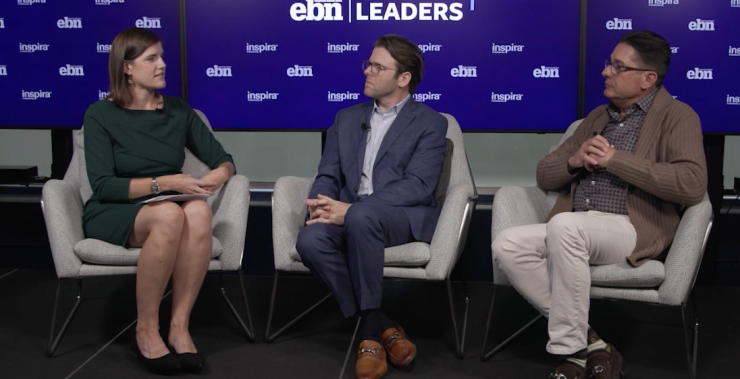- Key Insight: Learn why benefits must align with employees' home realities to stabilize retention.
- What's at Stake: Retention, engagement and costs rise if benefits fail to address caregiving and mental health.
- Supporting Data: Employees report 69% burnout while employers estimate 45% — a major perception gap.
- Source: Bullets generated by AI with editorial review
Employee stress, burnout and rapidly shifting expectations continue to
Yet employers
In conversation with Care.com's CHRO Wes Burke and LiveCor's CHRO Jon-Paul Ales-Barnicoat, a clear theme emerges: Employees' personal stressors — from caregiving to financial strain — don't stay at home anymore. These "living room problems," as Burke puts it, now shape the workplace in profound ways.
"The key to having any sort of workplace stability really starts by making sure that there's home stability and that there's some understanding of what your employees are going through," Burke says.
Designing benefits that
Read more:
As organizations navigate tight budgets,
In a recent Leaders panel, Burke and Ales-Banicoat share key takeaways that reveal how benefit leaders can build benefit ecosystems that are flexible, data-driven and trust-based.
1. Burnout is widespread — and employers often underestimate it
Burnout is both real and under-recognized, creating a major retention challenge that requires more honest visibility into employees' lived experiences.
"Burnout is the number one thing that's driving retention issues," says Burke. "But there's a huge disconnect in terms of what companies perceive in terms of their employees being burned out, versus what's actually happening."
2. Personal stressors at home now directly impact the workplace
Working parents, caregivers, and
"So much of it is private, so much of it is being held very close," Ales-Barnicoat says. "You don't necessarily see employees expressing that stress in the workplace. They take that home with them."
3. Flexibility is the universal benefit across all generations
Flexible schedules, hybrid work and manager trust remain the foundation of modern benefits strategies.
"The one commonality across all of these different generations is flexibility," Burke says. "And flexibility can be in a lot of different things for a lot of different people. So if it's in your benefit design or if it's in the way that you show up to work from an RTO perspective or hybrid perspective, I think that's first and foremost."
Read more:
4. Employees are overwhelmed by point solutions
Benefits leaders are shifting toward coordinated, curated guidance —
"Here's my problem, tell me what a good solution is, what the better is, and then what the best in class is and then the cost associated with that, and let me click check the box on those things," Burke says. "There's so much noise or so much communication that it drowns out all the other solutions."
5. Leadership modeling and transparency drive benefits engagement
The most effective culture strategies are simple: Leaders openly use benefits, share their experiences and communicate with honesty and vulnerability.
"Lead by example: I post [my blood donation] on Slack and say this is a great way to use your VTO hours," Ales-Barnicoat says. "A lot of it for us is about really the communication and transparency around what we're doing."
Read more:
6. AI will transform benefits navigation and predictive care — but trust must be built carefully
"I think what we'll see in the future is AI will eventually help us pick a health plan that won't just serve us today, but will serve us on whatever the analytics is telling us our health journey will be in the future," Ales-Barnicoat says.
7. Financial well-being and resilience will be a major future demand
As economic insecurity grows, employees want support that goes beyond health care—particularly in savings, investing and long-term security.
"We are increasingly getting demands from our employees to understand what their financial futures look like," Ales-Barnicoat says. "That is where we're going to see a real spike in support that employees are going to want to have across the board.






